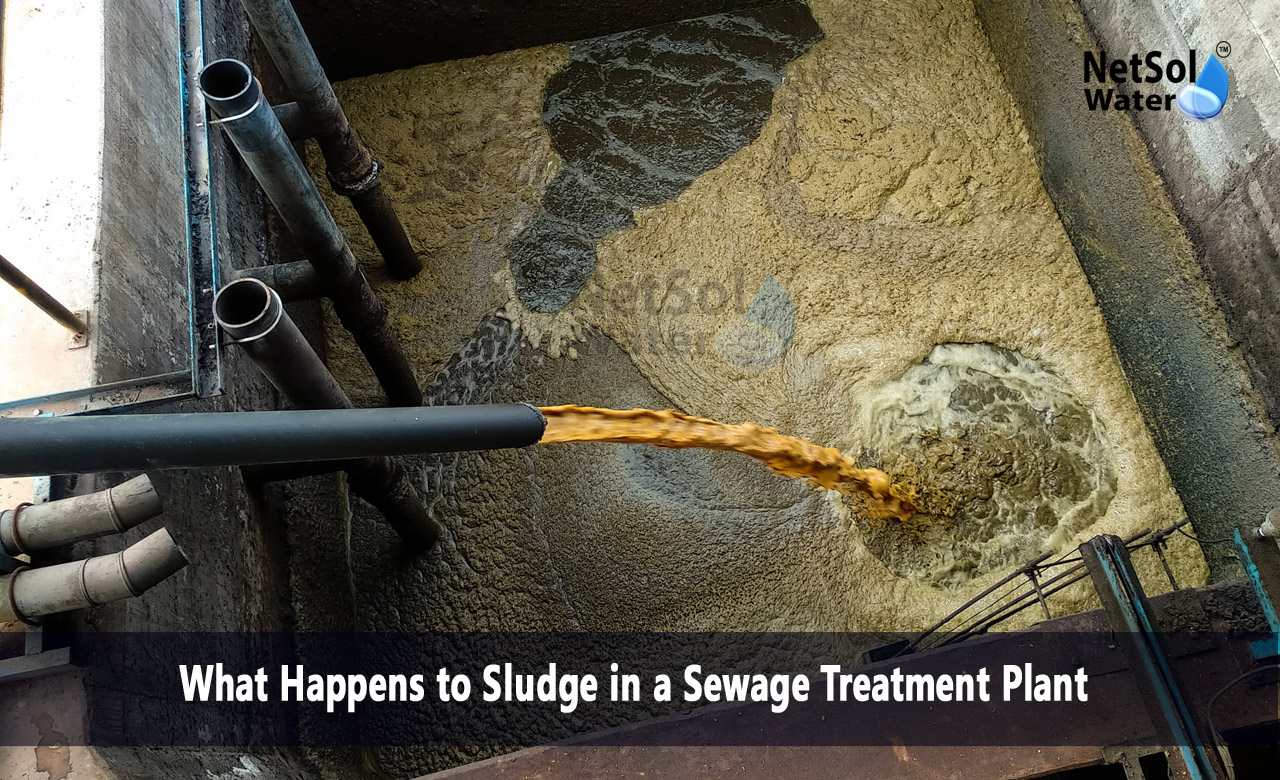What Happens to Sludge in a Sewage Treatment Plant?
Netsol Water leads the way in designing systems that manage Sludge in a Sewage Treatment Plant. Sludge in a Sewage Treatment Plant brings together solids from raw water and wastewater. It forms when microbes break down organic matter. Managing sludge prevents health risks and protects the environment. Netsol Water has built strong solutions for sludge handling across many plants. These solutions ensure that operators can treat wastewater safely and with ease. Effective management also cuts costs and reduces waste volume.
We will discuss what happens to sludge in a sewage treatment plant, explain each step that sludge takes on its journey from collection to final use or disposal.
Sludge Thickening
Sludge thickening marks the start of volume reduction. Thickening makes the sludge denser so it moves faster to the next step. Let us have a look at some key methods for sludge thickening.
Gravity Thickening
Gravity thickening uses time and space to separate solids from liquid. The sludge sits in a large tank. Solids settle down under the force of gravity. The clear liquid stays on top and moves on to further treatment. The settled sludge forms a dense layer at the bottom. Operators then draw off the liquid layer above. This process cuts water content and reduces load on later steps.
Flotation Thickening
Flotation thickening injects tiny air bubbles into the sludge. These bubbles attach to solids and lift them to the surface. The solids form a frothy layer that is easy to skim. The remaining liquid drains away below. This method works faster than gravity thickening. It also handles thinner sludge streams. Plants choose flotation when they need a compact footprint or rapid processing.
Sludge Digestion
Sludge digestion transforms organic material into biogas. This step makes sludge more stable. Let us have a look at some types of sludge digestion.
Anaerobic Digestion
Anaerobic digestion takes place without oxygen. Microbes break down organic matter in a closed tank. This process releases methane and carbon dioxide. Methane can power turbines to create electricity. The gas also heats the digester. This heat keeps microbial activity at an optimal rate. Anaerobic digestion can cut sludge mass by nearly half.
Aerobic Digestion
Aerobic digestion uses oxygen to support the microbes. The sludge mixes with air in large vessels. Microbes consume the organic matter to grow and reproduce. They release carbon dioxide and water. This process requires energy to blow air through the sludge. Plants use this method when they have access to cheap power and wish to avoid biogas handling.
Sludge Dewatering
Dewatering lowers the water content further after digestion. This step readies sludge for disposal or reuse. Let us have a look at some common dewatering techniques.
Belt Filter Press
A belt filter press squeezes sludge between two moving belts. Rollers apply pressure to expel water. The liquid drains out through woven belts. The resulting solid cake has less water by weight. Operators can adjust belt speed and pressure to optimize dryness.
Centrifuge
A centrifuge uses rapid spinning to force water away from solids. The sludge enters a rotating drum. High speed separates the heavier solids from the lighter liquid. The liquid exits through an outlet. The solid cake accumulates at the drum wall and is collected. Centrifuges work well for small to medium sized plants that need fast throughput.
Sludge Disposal and Reuse
The final path for sludge depends on its characteristics and local regulations. Sludge can find new life or go to a landfill. Let us have a look at some disposal and reuse options.
Land Application
Treated sludge can serve as a soil amendment. It adds organic matter and nutrients to farmland. Plants use nitrogen and phosphorus to grow. Strict rules ensure that sludge meets safety standards. This route turns waste into a resource.
Thermal Treatment
Thermal treatment heats sludge to high temperatures in an incinerator or kiln. The heat destroys pathogens and reduces volume. The ash can serve as a construction material. Energy from combustion can return to the grid. This method handles difficult sludges that resist other treatments.
Conclusion
Netsol Water brings expertise to every phase of managing Sludge in a Sewage Treatment Plant. We design and build systems for thickening, digestion, dewatering and disposal. Our solutions help plants operate with lower costs and higher safety. If you want to learn how Netsol Water can improve your sludge handling reach out today.
Contact Netsol Water at:
Phone: +91-9650608473, Email: enquiry@netsolwater.com



